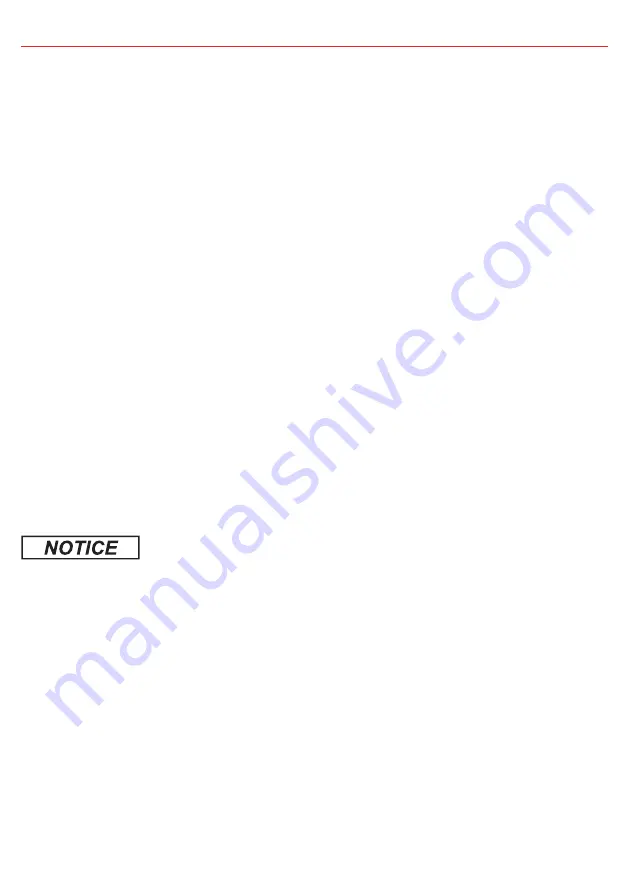
2
WARNINGS & SAFETY INSTRUCTIONS
7. Only use the Battery Charger for charging Standard Automotive Lead Acid, Calcium Content, Gel, AGM, SLI, or
Deep Cycle type 12V batteries.
8. NEVER smoke or allow a spark or flame in vicinity of battery. This may cause the battery to explode.
9. Be extra cautious so as to reduce the risk of dropping a metal tool onto a vehicle battery. Doing so might cause
the battery to spark or might short-circuit the battery or other electrical parts that may cause an explosion.
10. Remove personal metal items such as rings, bracelets, necklaces, and watches when working with a lead-acid
battery. A lead-acid battery can produce a short-circuit current high enough to weld a ring or the like to metal,
causing a severe burn.
11.
A SPARK NEAR A BATTERY MAY CAUSE THE BATTERY TO EXPLODE. TO REDUCE THE RISK OF A SPARK
NEAR A BATTERY WHEN CONNECTING THE BATTERY INSTALLED IN A VEHICLE TO THE BATTERY CHARGER,
ALWAYS DO THE FOLLOWING:
Always wire the Output Connector before connecting it to the Battery Charger. During connection of the unit,
the Battery Output (positive) must be connected first, followed by the Ground (chassis) terminal. The chassis
connection should be made away from the battery and fuel lines. DC Input (positive) should be connected
last. Once all connections are wired to the Output Connector, plug the connector into the Main Unit.
When disconnecting the Battery Charger, remove the AC Connector first, followed by the CAN connection then
the Output Connector from the Main Unit. The DC Input should be disconnected next, followed by the Ground
(chassis) connection, then the Battery Output connection if complete removal is necessary.
12.
PERSONAL SAFETY PRECAUTIONS
To assist with the safe operation and use of the Battery Charger:
a) Consider having someone close by to come to your aid when you are using the Battery Charger.
b) Have plenty of fresh water and soap nearby in case battery acid contacts skin, clothing, or eyes.
c) Wear complete eye protection and clothing protection. Avoid touching eyes while working near a battery.
d) If battery acid contacts your skin or clothing, remove the affected clothing and wash the affected area of your
skin immediately with soap and water. If battery acid enters your eye, immediately flood the eye with running
cold water for at least 10 minutes and seek medical assistance immediately.
e) To improve user safety it is recommended to control the charger and monitor the charging process using the
remote away from the vicinity of the battery being charged.
1. Do NOT connect computers or IT equipment to the Charger front panel connector or remote. Damage may occur.
2. It is recommended to leave the remote connected at all times to the base unit.
3. The Main Unit must be fixed using suitable screw mounts. Failure to adequately mount the unit, such as using
adhesives to mount the unit will result in unreliable operation of the charger.
4. When using the charger in Storage mode, make sure that all loads are disconnected from the house battery
under charge. Failure to do so may cause the house battery to be under charged, give false readings on the
State of Charge indicator and possibly cause damage to any loads connected.
5. A partially shaded panel (or low-light conditions such as dawn or dusk) will increase the target solar panel
voltage level to match the maximum power point. In this situation solar will be selected as a source however
little or no current will be flowing into the battery.
6. Modification of the ‘Advanced Settings’ menu items affect the way the Battery Charger responds to charging situations.
Modification of these settings may result in the Battery Charger not functioning at 100% of its capacity. These settings
should only be modified if absolutely necessary and when the effects of the changes are 100% understood.
7. Touring mode will achieve it’s best charge level if a Storage mode charge has been recently performed.
8. It is the installers responsibility to ensure their installation complies with any applicable legal and regulatory
requirements. Within Australia, installers may wish to consult AS/NZS 3001 as one potentially relevant standard.
For installation in caravans and similar vehicles, the connection to the supply mains is to be in accordance with
the national wiring rules.




































